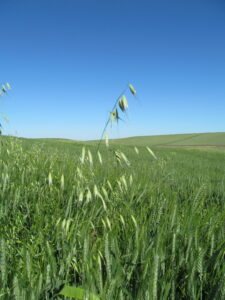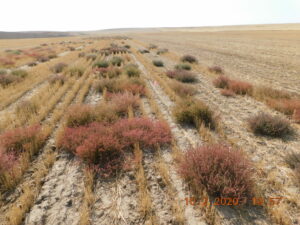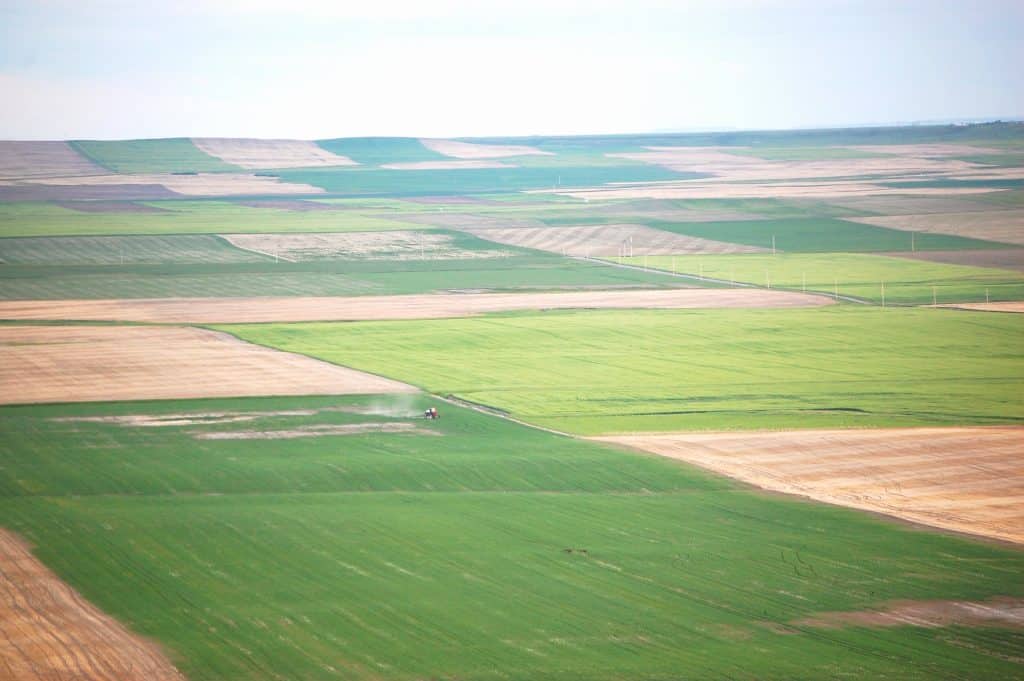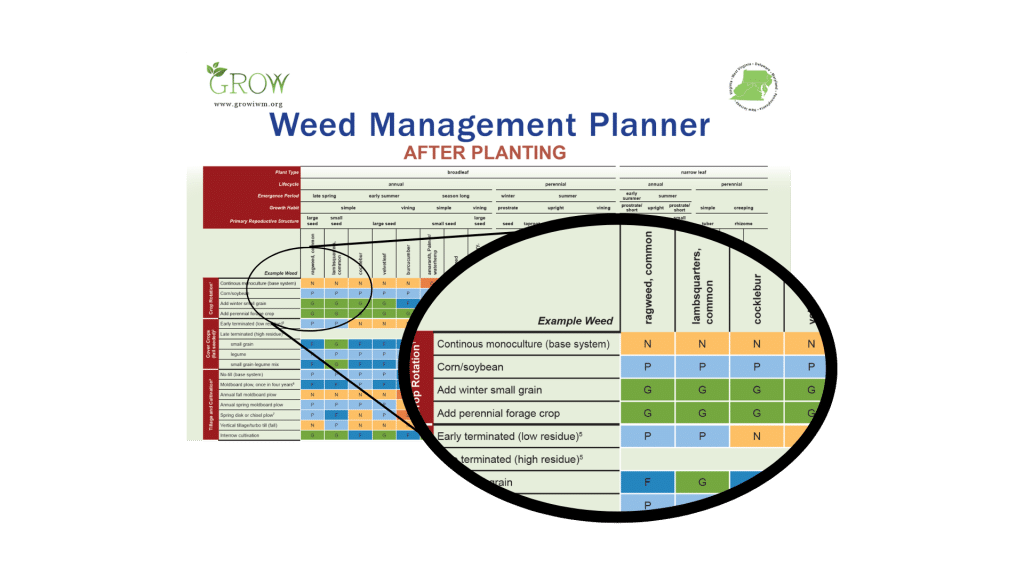Note from the GROW team: This page is being updated in an effort to provide you with the most accurate and timely information. In the meantime, please visit the rest of our website to learn more about the tactics to manage herbicide-resistant weeds.
Waterhemp is a pigweed that grows quickly and produces up to 1 million seeds per plant. Herbicide resistant populations are many, and are prevalent throughout many US states. Some populations are resistant to 3-5 herbicide sites of action. This level and prevalence of herbicide resistant waterhemp makes it necessary to integrate multiple management practices in order to achieve optimal control. Integrated weed management recommendations include:
- Prevent entry of new waterhemp seeds to the property by monitoring inputs and equipment for weed seed contamination
- Prevent spread between fields by harvesting infested fields last, and cleaning equipment if it comes in contact with waterhemp
- Apply herbicides when plants are under 4 inches tall for effective control
- Include residual herbicides in tank mixes, as waterhemp germinates all season
- Avoid reliance on herbicide sites of action with widespread waterhemp resistance
- Cultivate young plants
- Mowing will not kill most plants, and they will re-grow and produce seed. It should not be regarded as a full solution, but may help decrease seed-drop from escaped plants
- Do not allow plants to produce seed. Remove and destroy 100% of plants before they mature
- Read the resources below for further management recommendations.
Herbicide resistant populations:
- Group 2
- Group 4
- Group 5
- Group 9
- Group 15
- Group 2 + 5
- Group 2 + 9
- Group 14
- Group 9 + 14
- Group 2 + 5 + 4
- Group 2 + 14
- Group 2 + 5 + 14
- Group 2 + 9 + 14
- Group 27
- Group 2 + 5 + 27
- Group 2 + 5 + 9 + 14
- Group 2 + 5 + 9 + 27
- Group 2 + 4 + 5 + 14 + 27





